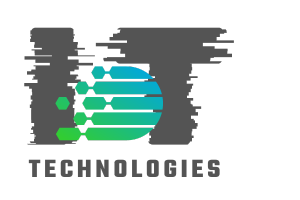
Toilet Water Usage Statistics: Insights for Tech Enthusiasts
Share
In a world where water conservation is increasingly critical, understanding toilet water usage statistics can offer significant insights, especially for tech professionals and enthusiasts. Toilets are among the highest water-consuming fixtures in homes. The Environmental Protection Agency (EPA) estimates that toilets account for nearly 30% of an average home's indoor water consumption. This fact alone makes it imperative to explore the statistics surrounding toilet water usage and the technologies that can help mitigate excessive water use.
For those in the tech industry, knowing the intricacies of water usage can inspire innovative solutions that marry technology with sustainability. As industry leaders, tech professionals have the power to drive change and awareness towards more water-efficient technologies. This discussion will delve into the trends, technologies, and strategies surrounding toilet water usage.

Why Focus on Toilet Water Usage?
Traditional toilets can use up to 7 gallons of water per flush, which is significantly higher than newer models. Modern toilets, such as high-efficiency toilets (HETs), use as little as 1.28 gallons per flush. The shift towards more efficient models has been driven by regulatory frameworks and an increased awareness of environmental impacts. According to the EPA's WaterSense program, switching to water-saving toilets can save the average family up to 13,000 gallons of water a year.
The Role of Technology in Water Conservation
Technology plays a pivotal role in optimizing water usage. Smart toilets equipped with sensors can adjust water flow based on the type of waste, ensuring that only the necessary amount of water is used per flush. This not only conserves water but also reduces utility bills. Furthermore, IoT technologies can monitor water usage patterns and provide data analytics to homeowners, offering insights on how to reduce wastage further.
For more insights into creating a sustainable home environment, check out our post on creating a green smart home.
Analyzing Toilet Water Usage Data
Data analytics is crucial for understanding the broader impact of toilet water usage. By analyzing usage patterns, engineers and developers can design more efficient systems. The integration of tech solutions like AI and machine learning can further optimize water usage. For instance, algorithms can predict peak usage times and adjust water pressure or flow accordingly, ensuring minimal wastage.
Our blog on water-saving toilets provides a cost comparison that can help consumers make informed decisions.
Future Trends in Water Usage Technology
The future of water usage technology is promising. As more tech companies venture into sustainability, we can expect innovations such as low-flow toilets, dual-flush systems, and even composting toilets to gain traction. These technologies aim to reduce the environmental footprint while maintaining functionality and user comfort.
To learn how to reduce water usage, visit our guide on reducing toilet water usage.
Conclusion
Toilet water usage statistics are a crucial facet of the broader conversation on sustainability. Tech professionals and enthusiasts have a unique opportunity to lead the charge in developing and adopting technologies that promote water conservation. By leveraging data and embracing innovative solutions, we can significantly reduce our water footprint and create a more sustainable future.
For insights on upgrading to a water-saving model, explore our article on upgrading toilets.

FAQs
How much water does a traditional toilet use per flush?
Traditional toilets can use up to 7 gallons per flush, whereas modern high-efficiency models use as little as 1.28 gallons.
What are the benefits of high-efficiency toilets?
High-efficiency toilets significantly reduce water usage, leading to lower water bills and a reduced environmental impact.
How can technology help in reducing toilet water usage?
Technology can optimize water usage through smart sensors, data analytics, and IoT solutions, ensuring efficient and sustainable water management.
This article contains affiliate links. We may earn a commission at no extra cost to you.
